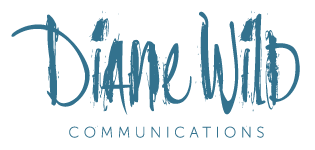On my way to Loch Ness last weekend – I’m spending my summer free time exploring more of my new country – I shared a bus ride with a jovial Australian man. From the seat behind me he soon asked that stock question: “What do you do?”
I have a stock response: “I’m a communications consultant.” And then I rush on to try to prevent the puzzled look: “I write for organisations and plan how to get their messages across.” It’s not a perfect description of what I do but it’s the 20 second response that doesn’t get me too far into eyes-glazing-over territory.
“Oh, marketing,” he said. I explained that I specialise in corporate communications, internal communications, and less on selling than maybe he was thinking.
Sometimes I mention newsletters, websites, and social media because they’re universal things people understand. Sometimes I mention advising organizational leaders, and some of the elements of a communications strategy, but that level of detail is reserved for eyeballs that have expressed more interest.
His response stopped me cold. “Oh, SPIN.”
Ughhhhhhh.
Spin is the opposite of good communications. It’s the opposite of any professional code in the industry. I’m a lapsed member of IABC (it’s not as active here in Scotland), a current member of PRCA (highly active in the UK), and both of their professional codes of conduct centre around honesty and accuracy.
Of course professional communicators craft what we think is the best way to convey a message. So does everyone. Otherwise we’d be walking streams of consciousness, boring and confusing everyone in our paths. A big part of the communicator’s job is to take complex topics and make them understandable; to dig into what people need to know, when, and why, and come up with the best how.
“So, like, ‘this is why the organisational redevelopment is the best thing ever,” the Australian had said.
I recalled discussions with my boss at the time as we pondered the communications strategy for a major organisational redevelopment, with many unknowns and moving pieces and tentacles leading to further complexities. We weren’t aiming to hide how difficult the change would be for employees; we were trying to explain what the change would mean for them. It wasn’t easy. At one point, after many metaphorical hairs were torn from our literal heads as we tried to come up with comprehensible messages, I said in frustration what’s since become my communications mantra: “what’s the simplest thing that’s true?”
I can build on simple and true. I can add nuance and context relevant to the particular audience. But I have to start with simple and true. That’s the job.
I didn’t say any of that to my Australian and his “oh, SPIN.” I think my exact words were “ugh, no” before I turned around in my seat. It might not have been a well-crafted message, but it was the simplest thing that was true.
[Photo caption: Actual footage of my reaction to “oh, SPIN.”]


